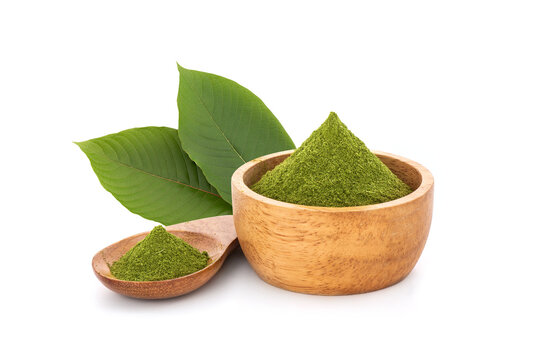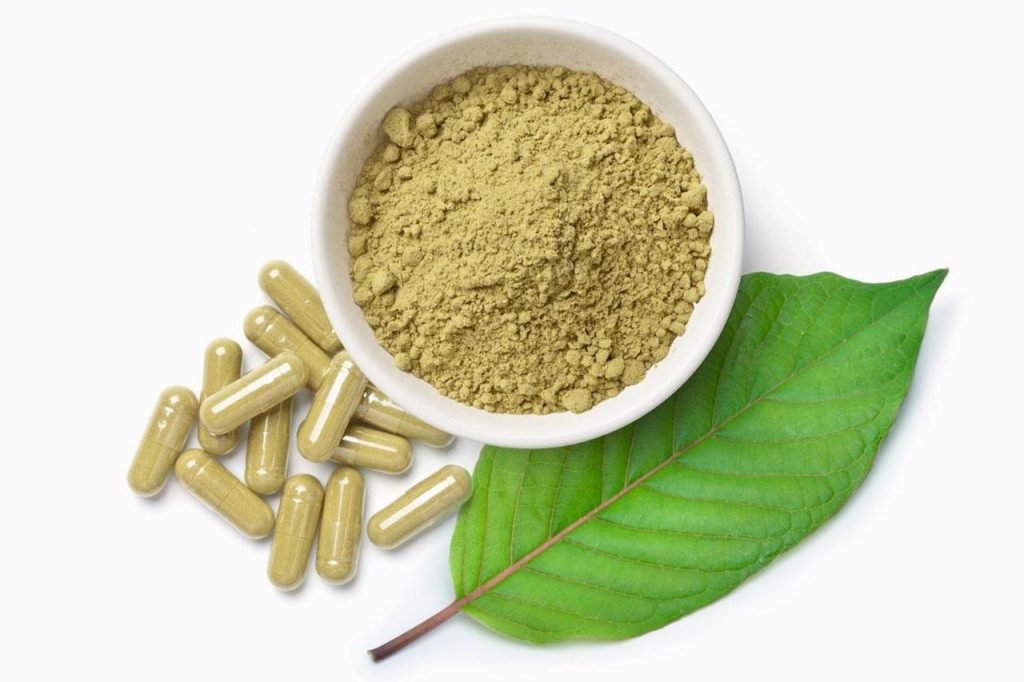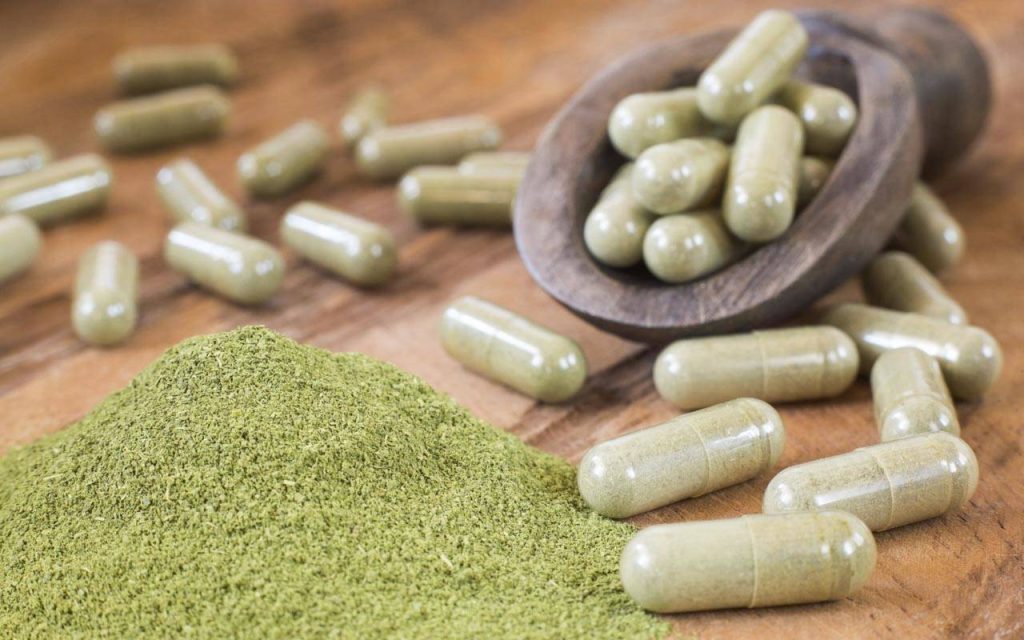Green Vein Kratom vs. Red Vein – Which Is Right for You
Each strain of kratom offers a unique profile of effects, and the choice between Green Vein and Red Vein can significantly impact your experience.
Green Vein Kratom
Green Vein kratom is known for its balanced effects, making it a popular choice among users seeking a middle ground. It provides a mix of stimulating and calming properties, offering a boost of energy and focus without the intensity of pure stimulants. This strain is often used for its moderate mood-enhancing qualities and its ability to promote mental clarity and alertness. Green Vein kratom is also valued for its potential to relieve mild pain and anxiety, making it a versatile option for those looking to manage stress and improve their overall well-being. One of the key characteristics of Green Vein kratom is its ability to deliver a smooth, steady effect throughout the day. Users often describe it as providing a gentle lift, ideal for tackling daily tasks and staying productive. It is a good choice for those who want to avoid the potential jitteriness associated with more stimulating strains and prefer a more balanced approach to their kratom experience.

Red Vein Kratom
In contrast, Red Vein kratom is renowned for its sedative and relaxing properties. It is commonly used for its potent pain-relief capabilities and its ability to promote deep relaxation and restful sleep. The effects of Red Vein kratom are generally more pronounced in terms of relaxation, making it a preferred choice for individuals dealing with most potent kratom for energy chronic pain, insomnia, or high levels of stress. Red Vein kratom is also noted for its potential to enhance mood and provide a sense of calm and tranquility. It can be particularly beneficial in the evening or before bedtime, as it helps to unwind and prepare for restful sleep. Users often report that it helps with anxiety and muscle tension, offering a soothing experience that can contribute to overall relaxation and well-being.
Choosing the Right Strain
Deciding between Green Vein and Red Vein kratom largely depends on your individual needs and goals. If you are seeking a balanced effect with a blend of energy and relaxation, Green Vein kratom may be the ideal choice. It is suitable for daily use and can help maintain productivity while providing a sense of well-being. On the other hand, if you are looking for a strain that offers strong relaxation, pain relief, and improved sleep quality, Red Vein kratom is likely more appropriate. It is important to consider how your body responds to different strains and to start with a small dose to gauge your reaction. Both Green Vein and Red Vein kratom have their own unique benefits, and experimenting with each can help you find the perfect match for your personal needs. Always ensure you are sourcing kratom from reputable suppliers and consult with a healthcare professional if you have any concerns about its use.
Tree to Supplement – Fascinating Journey of Kratom Products in Modern Wellness
Kratom, a tropical tree native to Southeast Asia, has gained increasing attention in the modern wellness landscape for its unique properties and potential benefits. Traditionally, the leaves of the Kratom tree have been used for centuries by indigenous communities in countries like Thailand, Indonesia, and Malaysia. These communities have relied on Kratom for its stimulant and analgesic properties, utilizing the plant to combat fatigue, relieve pain, and even as a ceremonial herb. Today, Kratom is making its way into the global wellness scene, particularly in the form of various products such as powders, capsules, and teas, which are marketed as natural supplements. The journey of Kratom from a traditional herbal remedy to a modern wellness supplement is both fascinating and complex. As it enters mainstream markets, Kratom is increasingly being recognized for its potential to manage pain, boost energy, and enhance mood. The leaves of the Kratom tree contain alkaloids like mitragynine and 7-hydroxymitragynine, which interact with opioid receptors in the brain, resulting in effects that range from mild stimulation to sedation, depending on the dosage. This versatility makes Kratom a popular choice among those seeking natural alternatives for pain relief, anxiety reduction, or even as a substitute for prescription opioids.

One of the most compelling aspects of premium bali kratom rise in the wellness world is its dual capacity to act as both a stimulant and a sedative. At lower doses, Kratom is known to provide an energy boost, similar to that of caffeine, making it an appealing option for those looking to enhance their productivity or combat fatigue naturally. Conversely, at higher doses, Kratom’s sedative effects take precedence, offering a calming and relaxing experience that some users find helpful for managing stress, anxiety, or chronic pain. This dual action has led to Kratom being dubbed a two-faced plant, one that can adapt to the varying needs of its users. However, the journey of Kratom into the wellness mainstream has not been without controversy. The growing popularity of Kratom products has raised concerns among regulatory agencies and medical professionals, particularly regarding safety, potential for addiction, and lack of standardization in the production of Kratom supplements. In some countries, Kratom has faced bans or heavy restrictions, largely due to concerns about its potential misuse and the lack of extensive clinical research to back up its purported benefits. In the United States, Kratom exists in a legal gray area, with some states banning its sale while others allow it, often under strict regulations.
Despite these challenges, the Kratom industry continues to thrive, driven by consumer demand and anecdotal evidence of its benefits. Many users advocate for Kratom as a valuable tool in their wellness routines, particularly those who have found relief from chronic pain, anxiety, or opioid withdrawal symptoms. The rise of online communities and advocacy groups has also played a significant role in spreading awareness and educating the public about Kratom, further fueling its integration into modern wellness practices. As Kratom continues to gain traction in the wellness world, it stands as a testament to the growing interest in natural and plant-based alternatives to conventional medicine. While its journey is still unfolding, Kratom’s roots in traditional medicine combined with its evolving role in contemporary wellness make it a fascinating subject of study and debate. The future of Kratom will likely depend on the balance between consumer advocacy, scientific research, and regulatory oversight, as the world seeks to understand and harness the full potential of this remarkable plant.
Is HHC Tincture the Future of Cannabinoid Products?
The rise of cannabinoids has led to an array of innovative products, with HHC hexahydrocannabinol tinctures emerging as a potential frontrunner in the future of cannabinoid consumption. HHC is a hydrogenated derivative of THC, the well-known psychoactive component of cannabis. While it shares some similarities with THC, such as its psychoactive effects, HHC is distinguished by its unique chemical structure, which may influence its effects and stability. One of the compelling reasons HHC tinctures are gaining attention is their potential to offer a novel experience compared to traditional cannabinoids. The hydrogenation process used to create HHC alters its molecular structure, potentially modifying how it interacts with the body’s endocannabinoid system. This could result in different psychoactive effects or therapeutic benefits, appealing to both recreational users and those seeking alternative treatments for various conditions. Unlike THC, which can degrade into less desirable compounds over time, HHC’s chemical stability might offer a longer shelf life and more consistent potency, making it an attractive option for both consumers and manufacturers.

Moreover, HHC tinctures may appeal to those who are sensitive to THC or who experience undesirable side effects from traditional cannabinoids. The altered chemical structure of hhc oil could provide a milder or different experience, potentially reducing the anxiety or paranoia that some users report with THC. For this reason, HHC tinctures could become a popular choice among those looking for a more balanced or controlled psychoactive experience. Additionally, as the legal landscape surrounding cannabinoids continues to evolve, HHC, with its distinct properties, might navigate regulatory challenges more effectively, further enhancing its appeal in the market. In terms of applications, HHC tinctures offer versatility in how they can be consumed and utilized. Tinctures are a popular method for cannabinoid delivery due to their ease of use, precise dosing, and rapid onset of effects. The inclusion of HHC in tincture form could cater to those who prefer a discreet and controlled way to experience cannabinoids.
This delivery method also allows for the possibility of combining HHC with other beneficial compounds or cannabinoids, creating customized formulations tailored to individual needs and preferences. Despite these potential advantages, it is important to approach the rise of HHC tinctures with a degree of caution. As with any new cannabinoid product, more research is needed to fully understand its effects, safety profile, and therapeutic potential. The burgeoning interest in HHC tinctures underscores the need for continued scientific investigation and regulatory oversight to ensure consumer safety and product efficacy. In conclusion, HHC tinctures represent a promising development in the world of cannabinoid products. Their unique chemical properties, combined with the versatility and convenience of tincture delivery, position them as a notable contender in the future of cannabinoid consumption. As the market continues to evolve, ongoing research and consumer feedback will play crucial roles in determining the long-term success and impact of HHC tinctures in the broader cannabinoid landscape.
Smart and Sustainable – Latest Trends in Bathroom Design and Eco-Friendly Products
In the evolving realm of interior design, the intersection of smart technology and sustainability is reshaping bathroom design, reflecting a growing commitment to both innovation and environmental stewardship. Modern bathrooms are increasingly adopting smart features that enhance convenience while promoting eco-friendliness. Intelligent toilets with built-in bidets, self-cleaning mechanisms, and water-saving functions exemplify how technology can contribute to sustainability. These high-tech fixtures often use less water compared to traditional toilets, helping to conserve this precious resource while maintaining high standards of hygiene and comfort. Additionally, smart showers with temperature control and flow rate management offer another layer of eco-conscious design. By allowing users to preset their preferred water temperature and monitor their water usage, these systems prevent wastage and promote efficient water use. The integration of sensors and automated controls ensures that water is used judiciously, aligning with the broader goal of reducing environmental impact.

Sustainability extends beyond individual fixtures to encompass the materials and design principles used in bathroom design hong kong. Eco-friendly materials such as recycled glass tiles, bamboo flooring, and low-VOC volatile organic compounds paints are becoming staples in modern bathroom design. These materials not only reduce the carbon footprint but also contribute to healthier indoor air quality. Recycled glass tiles, for example, offer a stylish and sustainable alternative to traditional ceramic tiles, while bamboo flooring is celebrated for its rapid growth and renewability, making it a viable option for environmentally-conscious homeowners. The design approach also reflects a shift towards minimalism and resource efficiency. Sleek, space-saving vanities and floating sinks not only enhance the aesthetic appeal of bathrooms but also reduce the amount of material required for cabinetry and fixtures. This minimalist trend supports sustainability by promoting efficient use of space and materials, thus minimizing waste. Another innovative development is the use of energy-efficient lighting and heating solutions.
LED lighting, known for its longevity and low energy consumption, is increasingly being used to illuminate bathrooms. Similarly, radiant floor heating systems, which are both energy-efficient and effective at maintaining a comfortable temperature, offer an eco-friendly alternative to traditional heating methods. Water conservation is further supported by the adoption of smart water management systems. These systems monitor water usage patterns and detect leaks, providing users with real-time data and alerts that help prevent waste and reduce utility bills. By integrating these technologies, homeowners can make more informed decisions about their water usage and contribute to overall environmental conservation efforts. Overall, the latest trends in bathroom design underscore a growing commitment to integrating smart technologies with sustainable practices. This fusion not only enhances functionality and comfort but also aligns with a broader movement towards environmental responsibility. As these innovations continue to evolve, they offer promising solutions for creating bathrooms that are both cutting-edge and eco-friendly, reflecting a future where style and sustainability go hand in hand.
Opening the Capability of Different Kratom Types an Excursion into Natural Variety
In the realm of natural cures, scarcely any plants have the enthralling charm and questionable interest of kratom. Hailing from the rich timberlands of Southeast Asia, kratom, deductively known as Mitragyna speciosa, has for quite some time been venerated for its different cluster of impacts, going from help with discomfort to temperament improvement. However, the multifaceted embroidery of its different strains genuinely opens the capability of this herbal miracle. The excursion into the domain of kratom variety starts with an investigation of its beginnings. Native to nations like Thailand, Malaysia, and Indonesia, kratom has been utilized for quite a long time by neighborhood networks for its restorative and sporting properties. Generally consumed by biting its leaves or preparing them into a tea, kratom has since acquired worldwide consideration for its indicated benefits.

Integral to understanding kratom’s flexibility is its arrangement into various strains, each recognized by its novel synthetic structure and impacts. Among the most well-known assortments are Maeng Da, Bali, Borneo, and Malay, each offering a particular encounter to the insightful client. Maeng Da, prestigious for its strong properties, clarity kratom is frequently commended for its invigorating impacts. Described by its elevated degrees of mitragynine and 7-hydroxymitragynine, Maeng Da is valued by those looking for a stimulating lift to their day or upgraded center during work or review meetings. Conversely, Bali kratom is commended for its quieting and narcotic characteristics. With higher groupings of 7-hydroxymitragynine, Bali is regularly pursued by people hoping to loosen up in the wake of a monotonous day or ease side effects of uneasiness and stress. In the interim, Borneo kratom stands apart for its balanced profile, offering a reasonable mix of both animating and loosening up impacts. Wealthy in alkaloids like mitragynine, Borneo is leaned toward by clients looking for help from ongoing torment or looking for a delicate state of mind lift without overpowering sedation.
Then again, Malay kratom, described by its interesting alkaloid profile, is valued for its life span and supported impacts. Known for its slow beginning and drawn out span, Malay is frequently preferred by those looking for expanded help from uneasiness or an unpretentious state of mind upgrade that endures over the course of the day. Past these conspicuous strains lie incalculable varieties and crossovers, each with its own subtleties and attributes. From the energetic tints of Green Vein strains to the relieving embrace of Red Vein assortments, kratom offers a kaleidoscope of opportunities for investigation and revelation. However, in the midst of the charm of its assorted strains, kratom’s process is not without discussion. As discussions encompassing its lawfulness and wellbeing keep on unfurling, clients should approach kratom with watchfulness and regard. Mindful utilization, informed by examination and balance, is fundamental to saddling its likely advantages while limiting dangers. The universe of kratom is rich embroidery of herbal variety, offering a range of encounters to the individuals who try to investigate its profundities.